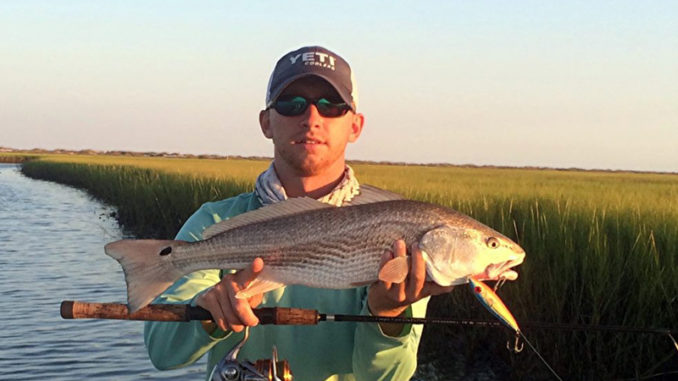
One of the best ways to catch Carolina redfish in late summer and early fall is pretend you’re fishing for largemouth bass.
Of all the pages on the calendar, September might be the best for chasing redfish, because of cooling water and more stable weather — as long as the tropics behave. With fishing in inland lakes still below average, a bass fisherman might find that an early fall trip to the coast might just scratch his fishing itch.
That was exactly what happened several years ago to start Glenn Finley, a dyed-in-the-wool bass fisherman from Belton, S.C., on his way to becoming a champion in redfish tournaments.
With water temperatures soaring on his home waters of Lake Hartwell — a good 4- to 5-hour haul from any saltwater — when it was family vacation time, he decided he’s pull his bass rig with him and see what he could find.
“I pulled my boat with us to the beach and just went down the bank casting like I was back home bass fishing,” Finley said. “I had about a 5-pound redfish smack the spinnerbait I was throwing, and he fought me all the way to the boat; they just don’t give up. That’s when I realized I could get used to this.”
That was the start of Finley’s trip with partner Dodd Wood, also from Belton, to the 2008 IFA Redfish Tour Championship and multiple redfish wins in the past nine years.
Bass fishing experience helps with catching redfish
Finley credits his experience as a bass tournament angler that gave him a different mentality and approach to chasing redfish.
“It’s very close to bass fishing,” he said. “The tactics are nearly the same. Equipment is basically the same. I catch redfish on crankbaits, spinnerbaits, a little bit of topwater, deep-diving crankbaits. Where I believe my bass-fishing background really pays off fishing for redfish is because I rely on my electronics and watch for drops and break lines.”
Finley also credits much of his success to his choice of boat. He fishes from a Ranger Z520 Intercoastal, basically a premium bass boat modified to withstand saltwater. The boat drafts as little as 10 inches of water, and it gives him a lot larger daily range.
“I can’t get quite as shallow as a flats boat, but my fishing range is out as much as 130 miles one way,” Finley said. “Because you only have to enter two fish in an IFA tournament, I can run 100 miles one way, catch my two fish and be back within tournament hours.”
Look shallow, but not too shallow
And not having a bulky center console or a flats boat helps him scout a wider area, giving he and Wood an advantage over local anglers and guides who are more familiar with schools of fish closer to the launch site.
“We prefer to concentrate on areas where the fish are back out in a foot-and-a-half of water instead of 6 to 8 inches of water,” Finley said. “We can get in real fast on the channel and then burn that flat up casting to every good point or cut in the grass and then move on.”
Finley’s style of running and gunning, using the Intercoastal Waterway as a travel route between primary bays and creeks, lets him see a lot of fish.
“Most of the other guys are stalking one school of fish,” he said. “Either they anchor up on them and try to pick a couple out, or they get up on the flats and pole for them. We’d just rather take our chances at cherry picking a lot of fish. Even if the bite is tough, we’re going to present a bait to more fish, and that lets us find the ones we need.
When it comes to comparing freshwater black bass to saltwater redfish, Allen Cain of Sight Fish NC in Wilmington, N.C., said that if bass fishermen can adjust to tides that affect the waters in both Carolinas, the skills and tackle they use for bass will work for catching redfish.
Redfish have many similarities to largemouth bass
“Reds are opportunistic feeders, just like bass,” said Cain (336- 613-2975), who grew up inland in North Carolina’s Piedmont. “Redfish are always on the hunt for food, and much of the secret to successful redfishing with artificial lures is presentation. If you can present that bait properly to the fish and make it look appealing, you’re going to have much greater success.”
Fishing artificials, Cain targets fish feeding on the surface, at mid-depths and on or near the bottom. Accordingly, his favorite baits are topwater/surface baits, weedless swimbaits and weighted jigheads combined with soft plastics.
Lure manufacturers make subtle changes between freshwater baits and their saltwater counterparts, but the game remains the same. Cain said his favorite bass bait, a spinnerbait, works just as well on redfish.
“On freshwater baits, the blades extend beyond the hook, but in a redfish spinnerbait, they don’t,” he said. “A redfish’s mouth is smaller than a largemouth bass, so this design lets the fish target the hook, not the blades, and you get more hookups.”
Vibrating baits work great in dirty water
“When the water is dirty, I use a lot of spinnerbaits,” Cain said. “It’s a great search tool when I can’t see the fish and sight-cast to them. The bait causes a lot of vibration, which helps a redfish find it. Redfish spinnerbaits also lean more toward solid bodies over skirts; you want to give a redfish a smaller target, and soft plastics let you add scent to the bait. That helps, too.”
When topwater fishing, Cain urges his clients to wait until they feel the weight of the fish on the line before setting the hook after a fish blows up on the bait. Again, this accounts for physiological differences between fish.
“Look at a redfish; you’d think he never eats anything over his head,” Cain said. “His mouth is on the bottom of his wide head, and even his eyes are focused down. To eat a topwater bait, he has to roll slightly over, and a lot of times he might miss it first try. But unlike a bass, he’ll keep chasing it again and again unless you jerk the bait away or he sees the boat.”
Cain prefers walking topwater baits over poppers. He said the back-and-forth action appeals to the red’s senses better than a periodic popping. He will walk the bait all the way to the boat.
Swimbaits are popular for bass anglers, and also for saltwater fishermen
Weighted swim baits are almost as popular in saltwater these days as they are on the bass circuits.
“A 3- to 4-inch white swimbait could be anything: a finger mullet, a mud minnow, a small croaker. Redfish will eat all of these,” he said. “I’ll usually only change to something darker if the water is stained.”
Cain’s final thoughts on rigging bass baits for redfish is to go weedless whenever possible. Most of the structure he’s going to target for reds – grass, oysters, rocks, or boat docks — will grab a hook and not let go.
“Think structure all the time,” he said. “Just like fishing a laydown or a submerged log for bass, that redfish is going to be hanging out around structure, and a weedless lure will make a better presentation working up to and over the structure every time.”

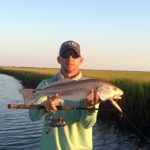
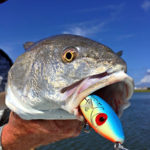
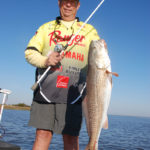
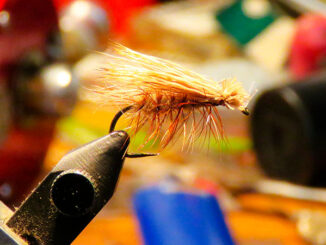
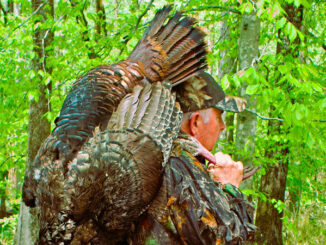
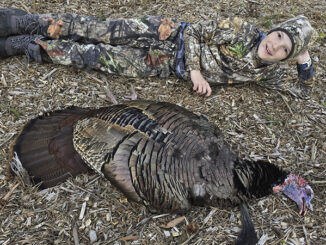

Be the first to comment